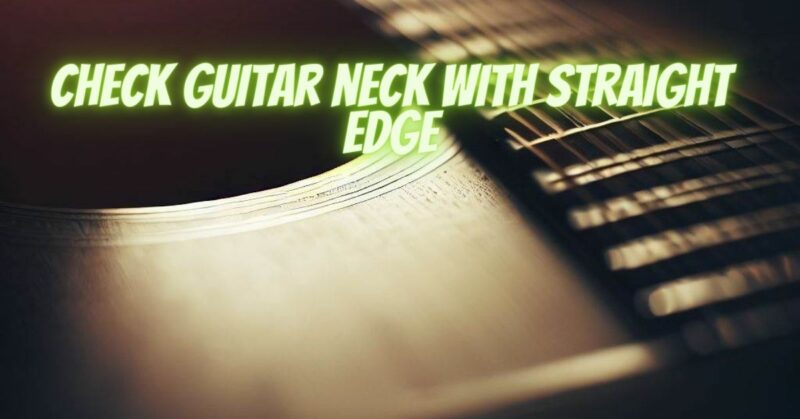The straightness of a guitar neck is vital for optimal playability and overall performance. Using a straight edge is a practical and effective method to assess the neck’s straightness. In this article, we will guide you through the process of checking a guitar neck using a straight edge, allowing you to identify potential issues and make any necessary adjustments.
Step-by-Step Guide to Checking Guitar Neck Straightness with a Straight Edge:
- Acquire a Suitable Straight Edge: Before starting, ensure you have a straight edge that is longer than the length of the neck. You can use a specialized guitar straight edge, a ruler, or any long object with a flat, straight edge.
- Tune the Guitar: Prior to assessing the neck, tune the guitar to your desired pitch. Proper tuning ensures accurate measurements and a reliable assessment.
- Position the Straight Edge: Lay the straight edge lengthwise along the neck, making contact with the frets. Begin at the first fret and extend it towards the body joint, ending around the last fret.
- Observe the Gap: Examine the gap between the straight edge and the frets. Ideally, the straight edge should make contact with most of the frets along the neck, indicating a straight or slightly bowed neck.
- Identify Potential Issues: Assess any gaps or deviations between the straight edge and the frets. Pay close attention to areas where the straight edge does not make consistent contact with the frets, as this may indicate a neck relief or bowing problem.
- Evaluating Neck Relief:
- Excessive Bow (Backbow): If the gap between the straight edge and the frets is larger in the middle of the neck, it suggests excessive backbow. This can lead to high string action and buzzing in the lower frets.
- Insufficient Bow (Forward Bow): If the straight edge does not touch the frets in the middle of the neck and only makes contact at the first and last frets, it indicates insufficient forward bow. This can result in low string action and buzzing in the higher frets.
- Adjusting Neck Relief: If you identify significant issues with neck relief, consider adjusting the truss rod. However, truss rod adjustments should be approached with caution. If you are unsure or uncomfortable making adjustments, it is advisable to seek assistance from a qualified guitar technician.
Conclusion:
Using a straight edge to check the straightness of a guitar neck is a valuable skill for any guitarist. By following the step-by-step guide outlined in this article, you can effectively assess the neck’s straightness and identify potential issues such as excessive backbow or insufficient forward bow. Remember that a slight bow or relief in the neck is often desirable for proper playability and optimal string action. If you have any doubts or concerns about the neck’s condition, it is recommended to consult a professional guitar technician who can provide expert advice and make any necessary adjustments. Regular assessments of the guitar neck’s straightness will help maintain its playability and overall performance.

